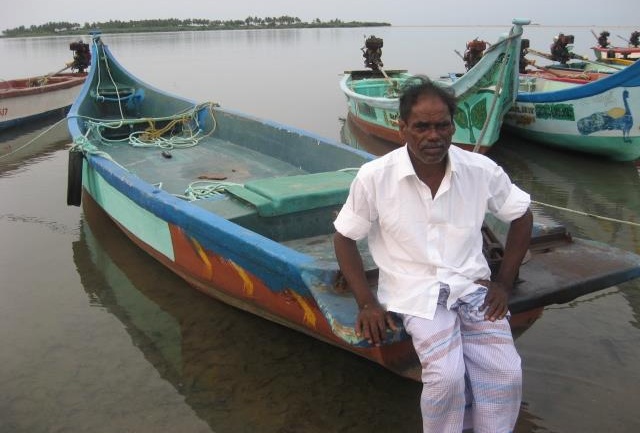Across all of the countries we work in, disaster risk reduction (DRR) is a crucial component of almost every program. Resourcing communities with the materials, skills and knowledge is essential in order to minimise damage, and prevent the heartache and desperation caused by natural disasters.
It has been estimated that every $1 invested in disaster risk reduction saves $7 in response costs when an emergency strikes (as estimated by the United Nations Office for the Coordination of Humanitarian Affairs and United Nations Development Programme).
This small investment can make a big difference in the lives of the most vulnerable in Asia Pacific.
In Vietnam alone, more than 70% of the population are at risk from natural disasters. Each year over two million people are affected and the economy loses hundreds of millions of dollars.
When Vietnamese authorities announced that Typhoon Nari was about to hit Quang Nam province in October 2013, father-of-three Truong was not overly worried for his home – “my house will not be destroyed since I built it firmly – using bricks to build the walls and tile to cover the roof”. But by the time the typhoon tore through the area, his house and all of his family’s meagre possessions had been completely destroyed.
Despite Truong’s confidence, the house had not been built to withstand strong storms or typhoons. The foundations were built with locally sourced stones and the walls were made with bricks, but there were no support beams or reinforcement. The roof was tiled, but was also built without beams and many of the roof tiles were broken and leaking even before Typhoon Nari struck.
Following the Typhoon, Truong joined Habitat’s training program and was able to access the education, skills training and materials he needed to build a safe home that would withstand destructive weather and natural disasters well into the future.
Truong recalls, “I participated in a home repair training session provided by Habitat for Humanity. Thanks to that training I now know why my house was destroyed by the typhoon and I know how to build and fix a house that can resist disasters, particularly strong winds and typhoons. With [their] support, we built a new house. Now my family feels safe, comfortable and happy to live in the new house because we have applied the knowledge gained from the training”.
In the aftermath of Tropical Cyclone Pam in Vanuatu, and the earthquakes in Nepal, we were gratified to learn that homes built by Habitat for Humanity had withstood the worst effects of the disasters.
 In Nepal, Sidhi, 71, lives in a home she built with Habitat for Humanity in 2010. Sidhi recalls, “I was outside gathering vegetables in the garden when the ground began to shake. My daughter was at work and my grandchildren were playing outside. The old houses suffered some cracks, while my Habitat house did not. I was afraid that my house would break away and fall down, but it did not. It is a strong house.”
In Nepal, Sidhi, 71, lives in a home she built with Habitat for Humanity in 2010. Sidhi recalls, “I was outside gathering vegetables in the garden when the ground began to shake. My daughter was at work and my grandchildren were playing outside. The old houses suffered some cracks, while my Habitat house did not. I was afraid that my house would break away and fall down, but it did not. It is a strong house.”
In Vanuatu, Rachel, a 34 year old mother of two, took shelter with her family in their Habitat built home during Tropical Cyclone Pam. As the wind gusts reached 320km/hr, their 10 year old home stood strong. Rachel recalls their frightening experience, “we were afraid of the strong wind, but we felt safe inside the house. Nothing was damaged. The house was strong.”
Positive stories like these serve as an encouraging reminder of the huge impact that preventative work can have on a community facing regular threat of natural disasters.
We know a safe and decent home has a transformative effect on the lives of families living in poverty. Parents can concentrate on earning an income and providing for their families, children can attend school and have a dry, safe place to study. Families have a true opportunity to lead independent lives, many for the first time ever.
To help make a difference, donate to our Spring Appeal to empower families to build safer and stronger communities for the long term.
Skip to content
Skip to sidebar
Skip to footer


